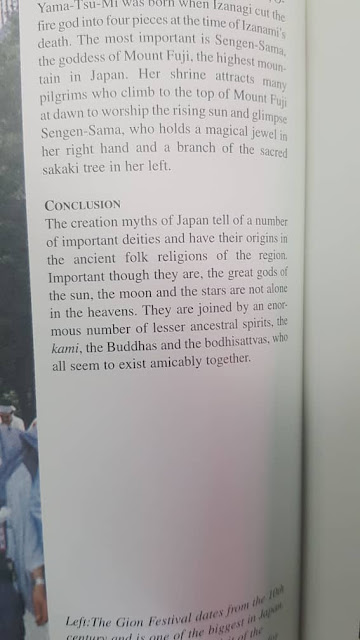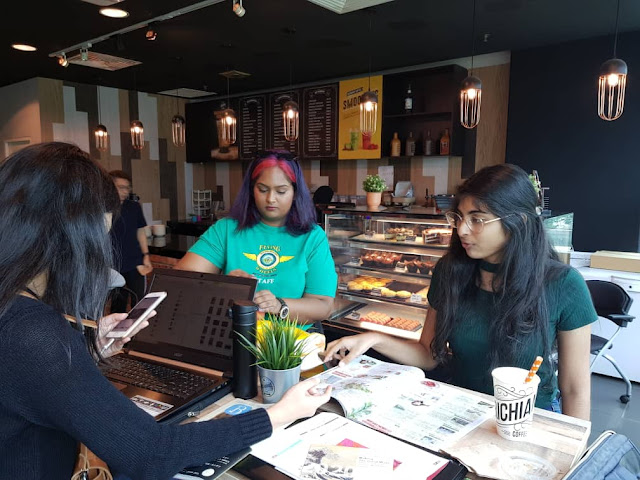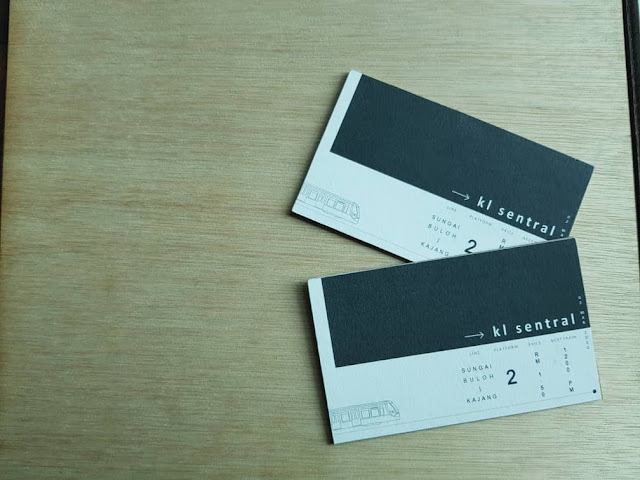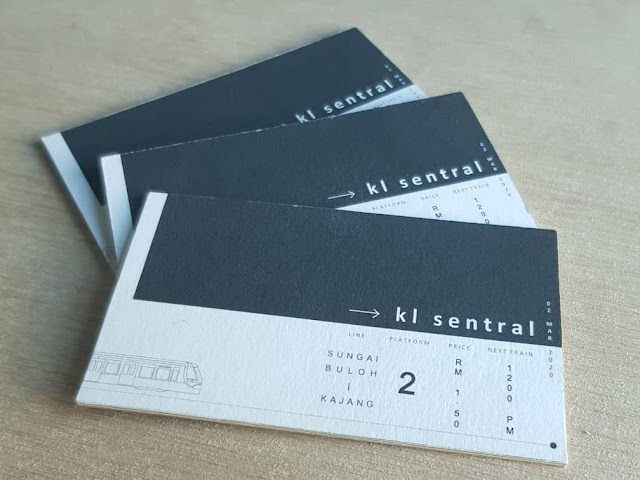Intercultural Design - Project 1, 2 & 3
Intercultural Design
Project 1, 2 & 3
(Week 1 - Week 7)
__________________________________________________________
Introduction
For this module, we were intended to investigate the cultural mythologies of the site that we were to visit i.e ( Japan, Thailand) and its relationship with contemporary culture by looking at its design such as Visual Arts, Film, Animations, Architecture, Fine Art, Fashion, automotive, A.I, Interior and etc. My group mates are (Wen Yi, Mokshanah, and Christy)
There are 3 main projects to this module :
1. Project 1 (Proposal)
2. Project 2 (On-Data Collection)
3. Project 3 (Final Idea)
For the process of Project 1, the process goes as follows :
1. Lectures
2. Research of Topic
3. Meeting with Lecturers
4. Revision of Topic
5. Proposal Presentation
6. Final Revision of Proposal
__________________________________________________________
Lectures
Lecture 1 - Mr. Charles
What is the reason of our visit to Japan/Thailand? Are we going with the label of tourists? or the label of students? OR perhaps as investigators to a foreign land rich with its onwn cultures and history as well as mythologies.
If we are to see a Japanese motif perhaps such as the dragons or a sun , ornament or a motif, ask yourself Why is that Japanese. Why does it seem Japanese? There has to be some sort of a history or a story as to why we perceive it to be that of a Japanese design.
Most of what we see today has a deep history, or significance of strong tradition/culture. It is our job, to discover that and tie it to modern/contemprorary design.
______________________________________
Lecture 2 - Dr. Yap Jinchi
Beginning with the painting of Micheangelo's of Narcissus, also the origins of Narcissistic,being self -absorbed, we somehow see a similar culture of being self absorbed with ourselves through the medium of taking selfies and so on. Though it may or may not be true, it has roots dipped in history.
We dwelled deeper into the topic of Culture. Culture refers to the cumulative deposits of knowledge, values, experience, beliefs, attitudes, meanings, hierarchy, nations of time, roles and concepts etc. acquired by a group of people in the course of generations through the individual and group striving. It is a way of life, as it may see. Cultures are rich with symbolism, such as rituals, etc in which it can be tied back to history or mythology.
Research of Topic
We then began individual research for our Proposal Topic stemming from Mythology. Below is some of my research. In the beginning it was bait difficult and daunting as it was my first time doing research. I tried looking into Mythologies, but was having trouble finding the connections to modern, contemporary design. Hence I decided to reverse the approach, and utilise what Mr. Charles said. He said to ask yourself what makes that particular item Japanese?
As I was doing my research, I discovered something called Zen Aesthetic, as what some say to be the origins of Minimalism. And began working my way form there. Below are my notes and mind maps on the topic :
- Japanese Mythology is often very much derived from its Religions and Believes specifically from 3 major sects :
• SHINTO
• BUDDHISM
• CONFUCIANISM
The effects of the religions can be seen in the formation of Japanese Mythology where by certain elements can be noticed :
-Japanese Mythology typically involves stories of Gods or Human Nature ➡ Shinto
-Japanese Mythology is the fundamental brick of Japanese Culture such as the Zen Culture ➡ Buddhism
-Japanese Mythology often denotes Respect for Nature & HARMONY Between Man and Nature where by elements of Nature such as animals and trees can often Move and Speak ➡ Shinto : exclaims that all elements of nature has KAMI (spirit)
Plus much more still need to do more research:
HOW THIS AFFECTS JAPANESE DESIGN IN MODERN DAY
There are two main derivatives that can be extracted from its culture and mythology
-HARMONY BETWEEN NATURE AND MAN
◾They most often use natural materials for their architecture or there is always an element of nature such as bamboos and refined wood as major materials in its architecture.
E.g :
▪Japanese furniture as well as utensils also are often made of natural and organic materials.
-ZEN DESIGN a.k.a MINIMALISM
▪ Minimalism has taken over West and all over the world by a storm and it’s origins lie in JAPAN.
▪Brands such as MUJI speak of its minimalism as well as modern Japanese furniture and cooking appliances. Tea sets and so on.
These are some of the research collected by my group mates:
By: Wen Yi




GROUP DISCUSSION
Later on, my group mates and I decided to gather and discuss about our findings and the nitty gritty details of our research topic.
We decided to focus more on Zen Minimalism and brainstormed for ideas and research questions :
__________________________________________________________
Meeting with Lecturers
The next day, we had a meet up with the lecturers and we presented our findings to them:
This is the feedback we received :
Mr. Charles drafted 3 possible ways to approach this with the 1st being the influence of Zen Minimalism influencing the world or specifically focussed in Japan?
2nd, influence tying Zen and Bauhaus, are there any sites in Tokyo?Will we be focussing on lifestyle? Practices?
3rd, Zen is not reflected in Japanese Web Design? Why?
Miss Anis suggested to focus more on Layout Design as a whole, so involving billboards, Movie Posters, layout of the cities, etc.

Mr. Asrizal and Miss nail informed us that Tokyo is anything but Zen and that it will be hard to approach this topic. Mr. Charles then told us that right now we have all our assumptions or theories about this topic, so what we are to do now is to take those theories to Japan and see if we can verify them, and finally come back and present our findings.
We decided to go with zen and minimalist, we got the heads up to go ahead and continue with the topic. And our designated lecturer is Ms Anis. After the consultation, we set down the research topic and research problem.Each of us decided to have a write up about a problem statement and then see if we can somehow combine or use bits and pieces of all to form a complete problem statement.
__________________________________________________________
Proposal Presentation
For the feedback of the proposal:
What is the difference between wabi-sabi and zen? There isn't much ties of wabi-sari to Zen. Remove the Daruma dolls as there's no connection to Zen, only Bodhidharma has the connection. For the examples of the websites, we have to think about what kind of website it is, there's different set of design principles applied. We are also told to look into layout design of movie poster and tickets etc. Rephrase research question 1, be specific to what we are looking at as a designer. Research question 2, don't show the current examples since its just empty on the billboard, instead show billboard with minimalised designs like minimalise the logo. For the 5 ideas, what messages are we trying to say, we have to figure that out first then we can have clear ideas.
__________________________________________________________What is the difference between wabi-sabi and zen? There isn't much ties of wabi-sari to Zen. Remove the Daruma dolls as there's no connection to Zen, only Bodhidharma has the connection. For the examples of the websites, we have to think about what kind of website it is, there's different set of design principles applied. We are also told to look into layout design of movie poster and tickets etc. Rephrase research question 1, be specific to what we are looking at as a designer. Research question 2, don't show the current examples since its just empty on the billboard, instead show billboard with minimalised designs like minimalise the logo. For the 5 ideas, what messages are we trying to say, we have to figure that out first then we can have clear ideas.
Final Revision of Proposal
Below is the final revised version of the proposal :
__________________________________________________________
Reflection
The entire process of the module was rocky, there were constant highs and lows. I have to learn not to be bummed out by harsh criticism, as honestly that's what were gonna be faced with outside.

__________________________________________________________
Introduction
As I was unable to join the trip, I was only able to help prepare certain things like the interview questions and so on.
For the process of Project 1, the process (for me) goes as follows :
1. Discussion of Data
2. Compilation of Findings
3. Presentation
__________________________________________________________
As I was unable to be there for the Japan Trip, I helped prepare and design the interview questions that we were to ask :
So, once my teammates got back, we had a discussion and managed to get a gather the key findings:
I volunteered to break down the information to compensate for my (MIA) in Japan. Below is the presentation of the breakdown:
https://docs.google.com/presentation/d/1ocirgqHi1iDNY9t-kwdrfmVK6yO3AI998tM1xN-OL-8/edit?usp=sharing
__________________________________________________________
Introduction
For Project 3, we were required to create anything showcasing the message that we have brought back from Japan.
This is how the process follows:
1. 1st Attempt
2. Consulting Lecturers
3. Ticket Vending Machine
__________________________________________________________
1st Attempt
For our final project, we wanted to do something experiential, an experience as opposed to a physical product. Hence we went with the idea of a photobooth.
Below are the ideas and us trying it out :
__________________________________________________________
Consulting Lecturers
However, we soon noticed that it was going to be too big, and Miss Anis eventually suggested that we make it more display friendly.
We were also told by Mr. Charles to get a specific statement, and our final message that we wish to share using this project :
However, we had to do major modifications especially to the measurements and it proved to be tougher because the measurements were already super vague to begin with. Thanks and much Kudos to Wen Yi our group mate who managed to Math her way out and provide us with the measurements.
We decided to do Laser Cutting for the exterior and proceed to cut the interior mechanisms as it is easier to control the thickness of the materials i.e Cardboard and Modelling Board.
Below are the process photos :
These are the exteriors and interiors of the vending machine:
Introduction
As I was unable to join the trip, I was only able to help prepare certain things like the interview questions and so on.
For the process of Project 1, the process (for me) goes as follows :
1. Discussion of Data
2. Compilation of Findings
3. Presentation
__________________________________________________________
As I was unable to be there for the Japan Trip, I helped prepare and design the interview questions that we were to ask :
So, once my teammates got back, we had a discussion and managed to get a gather the key findings:
- Japanese Design mostly relies on its functionality as opposed to aesthetics solely.
- Japanese people are usually taught how to think/react, hence, they need more information when purchasing the items. So, this is usually reflected in their packaging design where a lot of information will be crammed. This will result in the layout having a lack of negative space.
- In Buddhism, they teach you to let go desires, so Japanese people generally practice minimalism.
I volunteered to break down the information to compensate for my (MIA) in Japan. Below is the presentation of the breakdown:
https://docs.google.com/presentation/d/1ocirgqHi1iDNY9t-kwdrfmVK6yO3AI998tM1xN-OL-8/edit?usp=sharing
__________________________________________________________
Introduction
For Project 3, we were required to create anything showcasing the message that we have brought back from Japan.
This is how the process follows:
1. 1st Attempt
2. Consulting Lecturers
3. Ticket Vending Machine
__________________________________________________________
1st Attempt
For our final project, we wanted to do something experiential, an experience as opposed to a physical product. Hence we went with the idea of a photobooth.
Below are the ideas and us trying it out :
__________________________________________________________
Consulting Lecturers
However, we soon noticed that it was going to be too big, and Miss Anis eventually suggested that we make it more display friendly.
We were also told by Mr. Charles to get a specific statement, and our final message that we wish to share using this project :
This is the final message that we came up with :
To embrace and apply the functionality of design based on the Zen Aesthetics of Japanese Culture that would add value to Malaysian Identity Design.
_______________________________________________
Vending Machine and Ticket
So, to integrate the functionality of Japanese Design and Malaysian identity, we took the example of the Japanese tickets which has all the necessary information such as the price, the train line, the location, the date and time.
Whereas, Malaysia uses the system of token, which really doesn't have much function at all. So we decided to come up with a Ticket Vending Machine that dispenses train tickets in Malaysia.
We used the video below as a reference to what we were going to create : We decided to do Laser Cutting for the exterior and proceed to cut the interior mechanisms as it is easier to control the thickness of the materials i.e Cardboard and Modelling Board.
Below are the process photos :
Below are the photos of the completed ticket that features information such as :
- Line
- Place
- Platfrom
- Price
- Time
These are the exteriors and interiors of the vending machine:
For the complete progression starting from the 1st Project, you can view it here :
_________________________________________________________
Reflection
Teamwork is extremely important and one big factor that either makes or breaks the team is communication. If we fail to communicate our feelings, our gratitude or anything at all, the message will never be properly conveyed at all. it may lead to many misunderstandings. I feel that I may need to work more on communicating my messages to my group mates well. Am glad to get the team that I did and very grateful for each and everyone of their contributions.








































Comments
Post a Comment